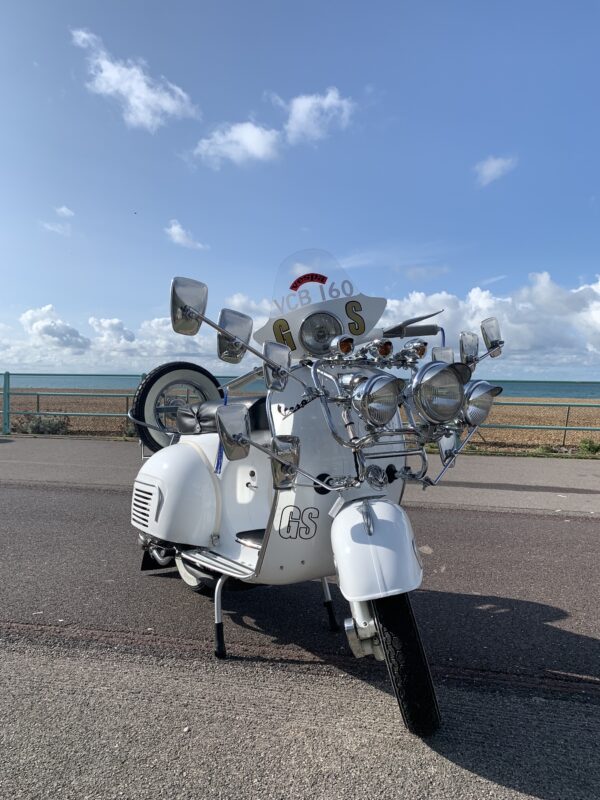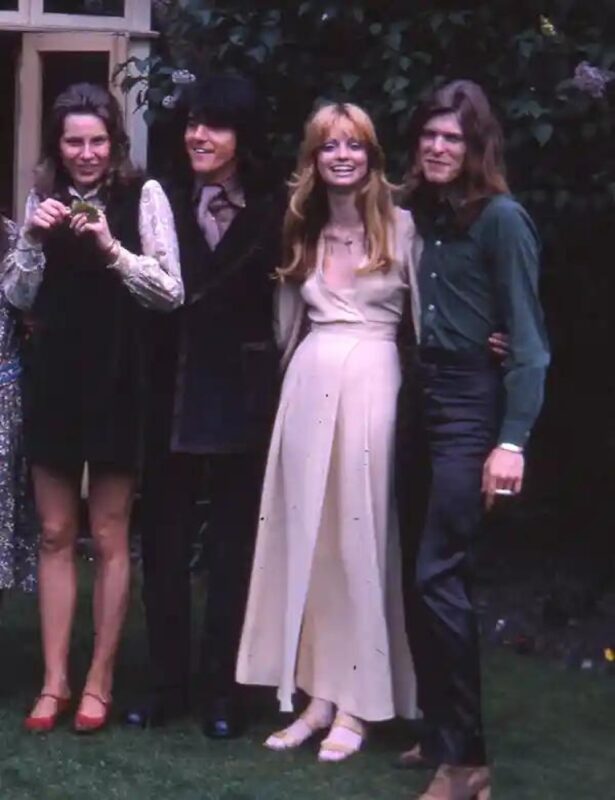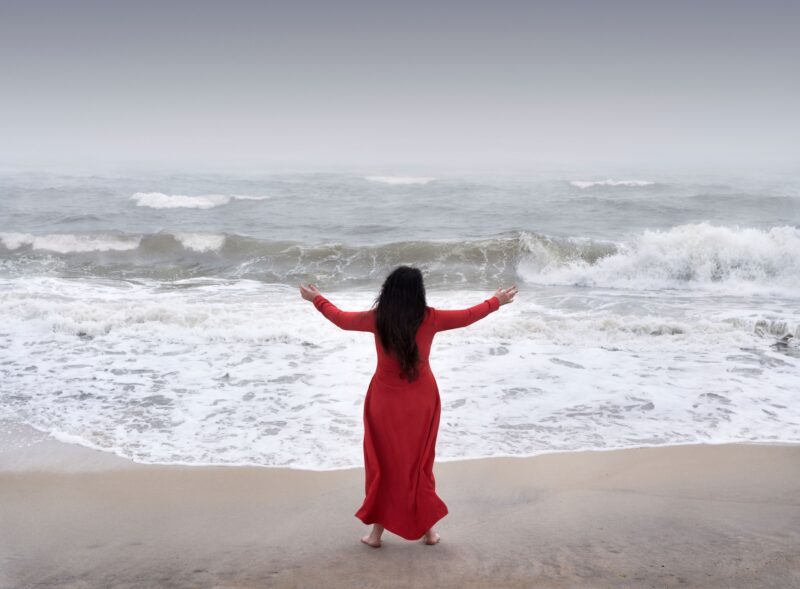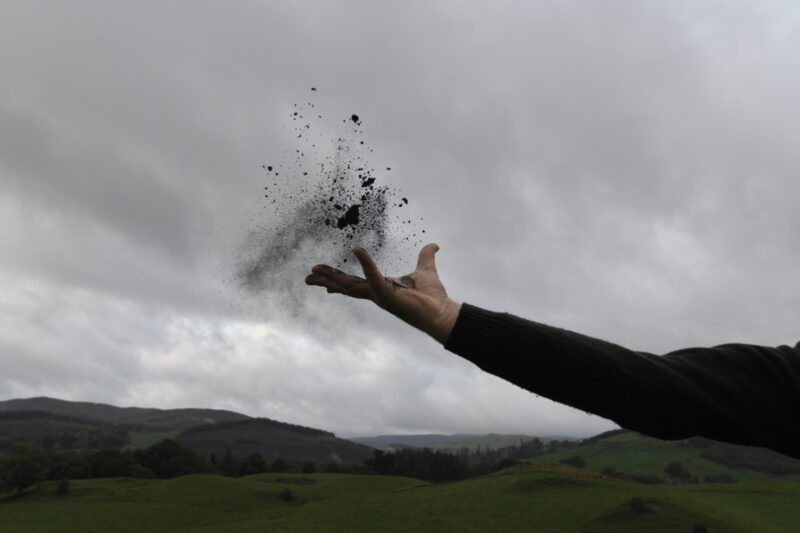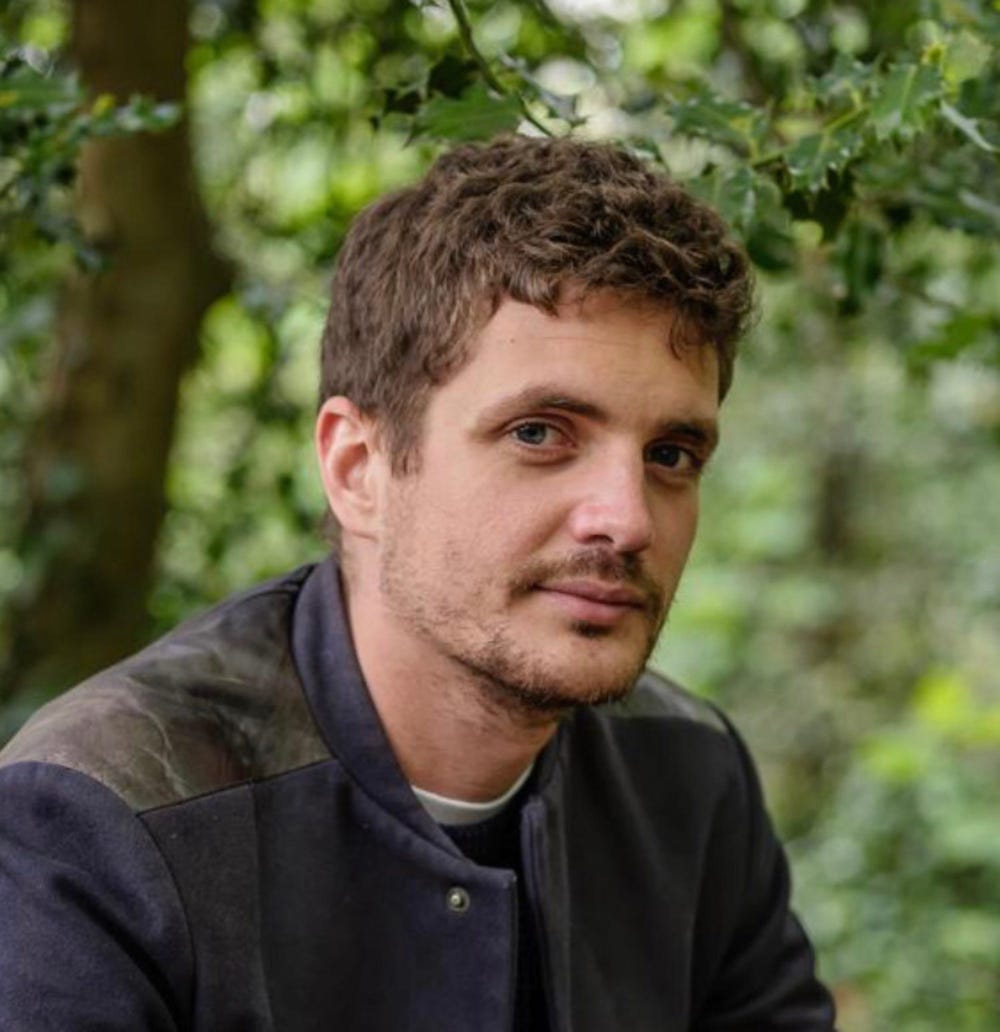
We talked to Migrate Art founder Simon Butler about their upcoming exhibition From The Ashes and auction.
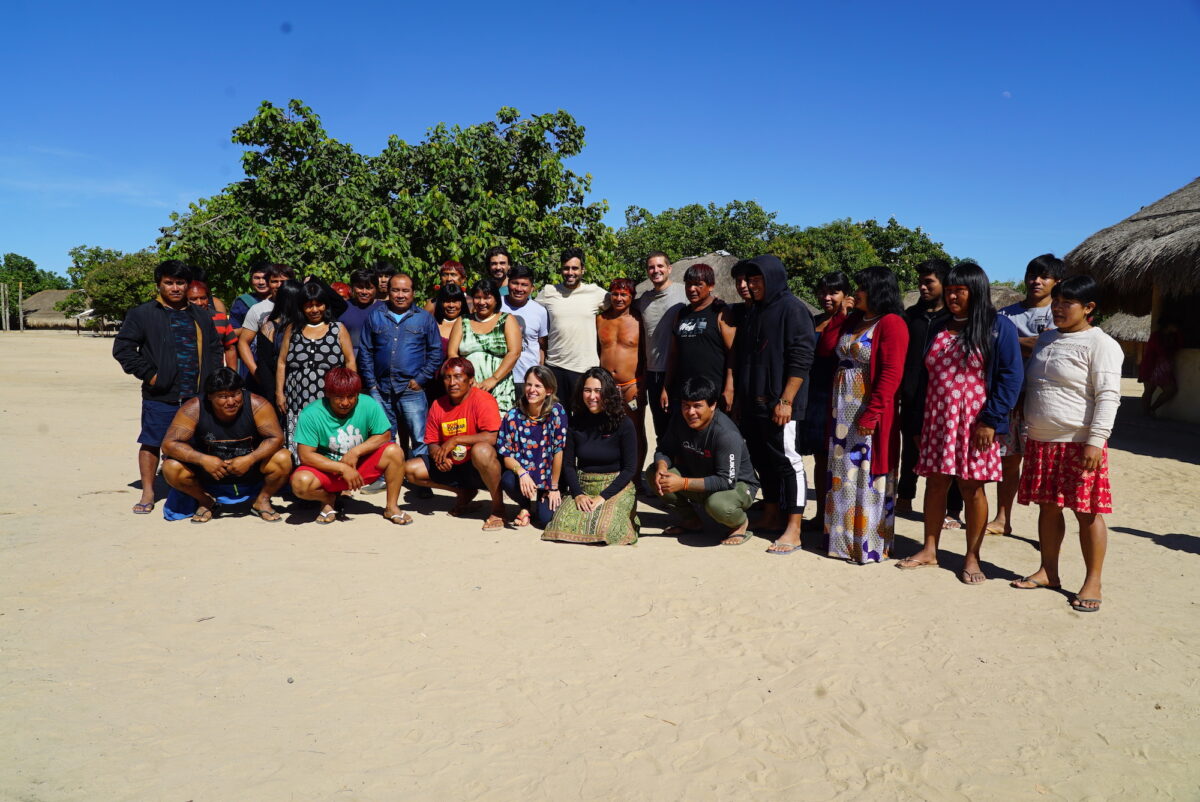
What has motivated you to put the From The Ashes exhibition together?
In 2022, at the invitation of an organisation called People’s Palace Projects, I went to Brazil and travelled into the Amazon rainforest to stay with the indigenous Xingu community. It was around two days of travel to reach the villages, and during the final five or so hours of the journey before we entered the rainforest we were surrounded by an apocalyptic red dusty desert that used to be rainforest and was now used as farmland. Throughout our stay, we had conversations with the communities and they told us the significant impact that rising temperatures and illegal logging and mining is having on their lives and safety. I had heard about these issues in the media, but seeing the scale of the destruction first hand was heartbreaking- you couldn’t help but have a physical reaction, and I knew I wanted to do something to contribute positively.

How did you get to meet the Xingu community?
As I mentioned, I was invited by People’s Palace Projects, who are extremely aligned with the mission and values of Migrate Art. As part of our previous project, Scorched Earth we held an exhibition on Cork Street in London. During that exhibition, Thiago from People’s Palace Projects came in and really connected with the project. He said something along the lines of ‘I work with indigenous communities in the middle of the Amazon rainforest- would you be interested in coming?’. Of course, there is only one answer to that question. Due to a couple of further Covid lockdowns and not being able to travel, it took two years of planning to come together, but in July 2022 I got on a plane to Rio de Janeiro and experienced some of the most important weeks of my life.
Can you tell us more about the origins of the ash and charcoal used in the exhibition’s artworks?
One of the people that hosted us in their home was Piratá Wauja, an indigenous researcher and teacher. He suggested, along with a few others from the community, that they could take us to an area of the forest that had previously been destroyed by illegal fires. As soon as we got there and I saw the black charcoal from the trees and a layer of grey ash that covered the forest floor my mind was buzzing with ideas. I knew if we could collect this charcoal and ash and get it back to London we could make it into art materials for artists to use. I still have a notebook from that trip full of various ideas of different directions the project could go, but we eventually settled on the idea of creating a range of art materials and sending artists an ‘artist kit’ containing paint, ink and pastels that were made with these remnants of the burned forest. We collaborated with Jackson’s Art Supplies, Unison Colour and Cranfield Colours to create the different elements of these kits and began sending them to artists in May 2023.
How have the indigenous communities been involved in this project and its artworks?
Working in collaboration with the communities that our projects support is key to our work. We have a number of incredible works in the exhibition from artisans and artists from the Ulupuwene and Topepeweke villages. After we had made the artist kits, we managed to send some of them back into the Amazon for the community to use. They came together to hold a ceramic painting workshop and created a beautiful range of ceramics and wooden items using the paint that depict wildlife of the rainforest and spirit animals from Wauja storytelling. We were fortunately able to get these items sent to London and will show them as part of the exhibition, alongside the works of leading contemporary artists. We also have three paintings from Kamo Waura, a village shaman, who sat and shared his artworks with me of the spirit animals that visit him in his dreams from the rainforest. Kamo expressed that he has always wanted to paint on canvas with proper brushes, so when we sent the artist kits back to the community, I also sent Kamo some canvas and brushes, and the three paintings we have in the exhibition are the works that he created with these materials. Also included in the exhibition is a portrait I painted of Kamo using paint made from Urucum seeds. This Urucum seed paint is used as body paint for ceremonies in the village, and Kamo asked if I would paint his portrait, and gave me some of the ceremonial paint to do so. It has been a really wonderful artistic exchange.
How will the funds raised be used to support the resistance of the indigenous communities of the Amazon rainforest?
We always take the approach that we know very little about a situation and try to learn as much as possible from the community themselves. The outcomes of this project were suggested by the Xingu community. They have a fledgling indigenous fire brigade, but they lack equipment and trained team members to really have the impact that is needed to protect the rainforest. During our time there, we had a number of meetings with the community, and various community leaders. One of the main ideas suggested was that financially supporting this fire brigade would be the best way that we can assist the community.
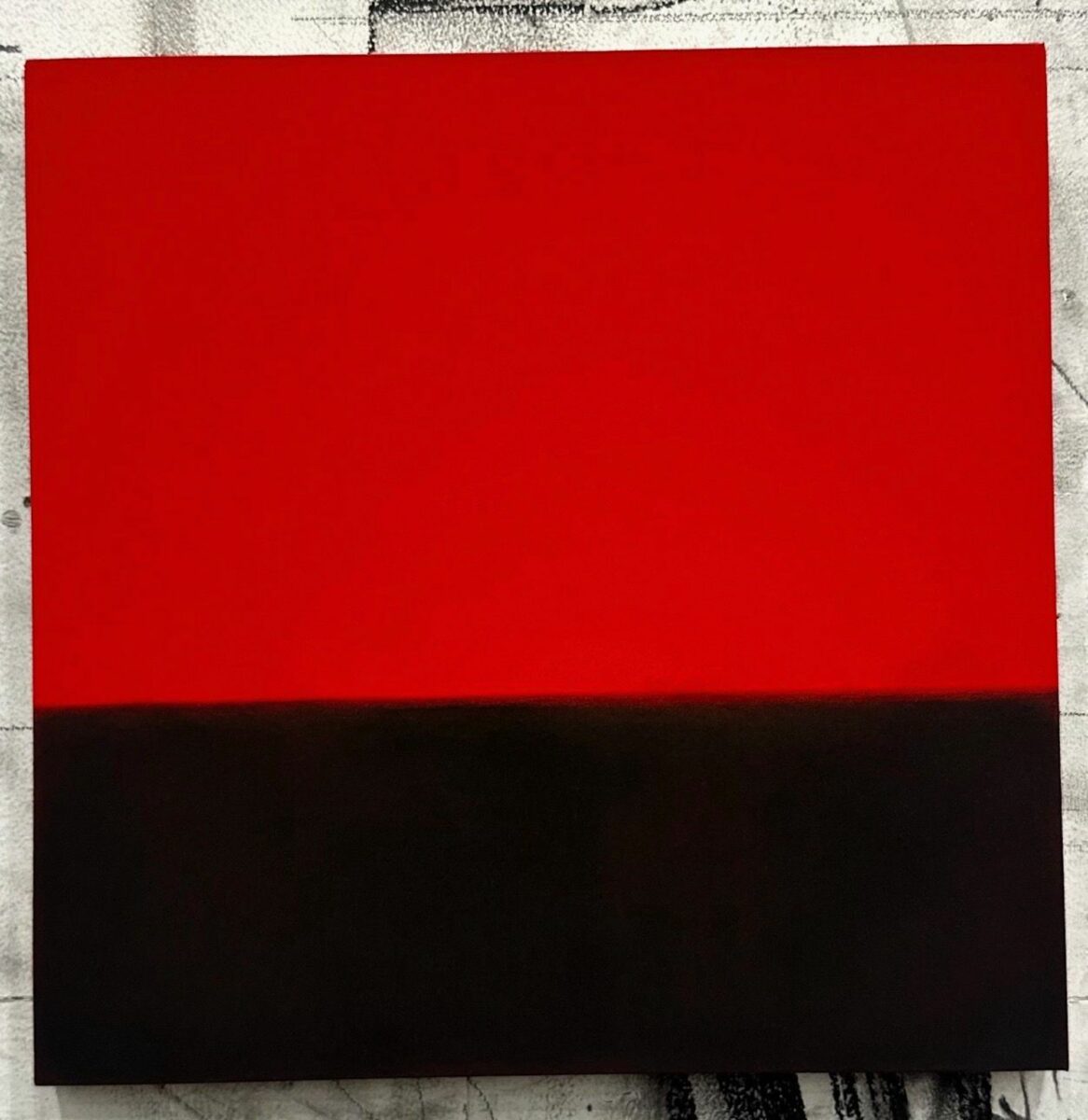
How was your project received by the artists you’ve commissioned?
A lot of artists engage quite deeply with our projects, and some of the feedback we have had has been wonderful to receive. It is always fascinating to see the range of responses that artists create, despite all being given the same materials. For this project we’ve got paintings, sculpture, photography, drawings- it’s a real mix. Different artists connect to our projects for different reasons, and they it’s always interesting to know what aspect has cut through the noise. For example, there is an obvious connection with the charcoal to the work of Robert Longo, or María Berrío seemed compelled to join the project due to her Latin American roots, saying ‘It’s been a moving and meaningful experience turning these remnants of destruction into something creative. It is our hands that have brought such ruin upon our own lands and the communities we share these lands with. Those same hands must likewise find ways to rebuild from the ashes. It was a bittersweet project, where the sorrow that gripped me while holding the proof of our failings gave way to the notion that, perhaps, there is hope for us after all.’ We have been to a number of studios to record the process of artists making the works, which we will release online to explain some of the artists’ connections to the project a little further.
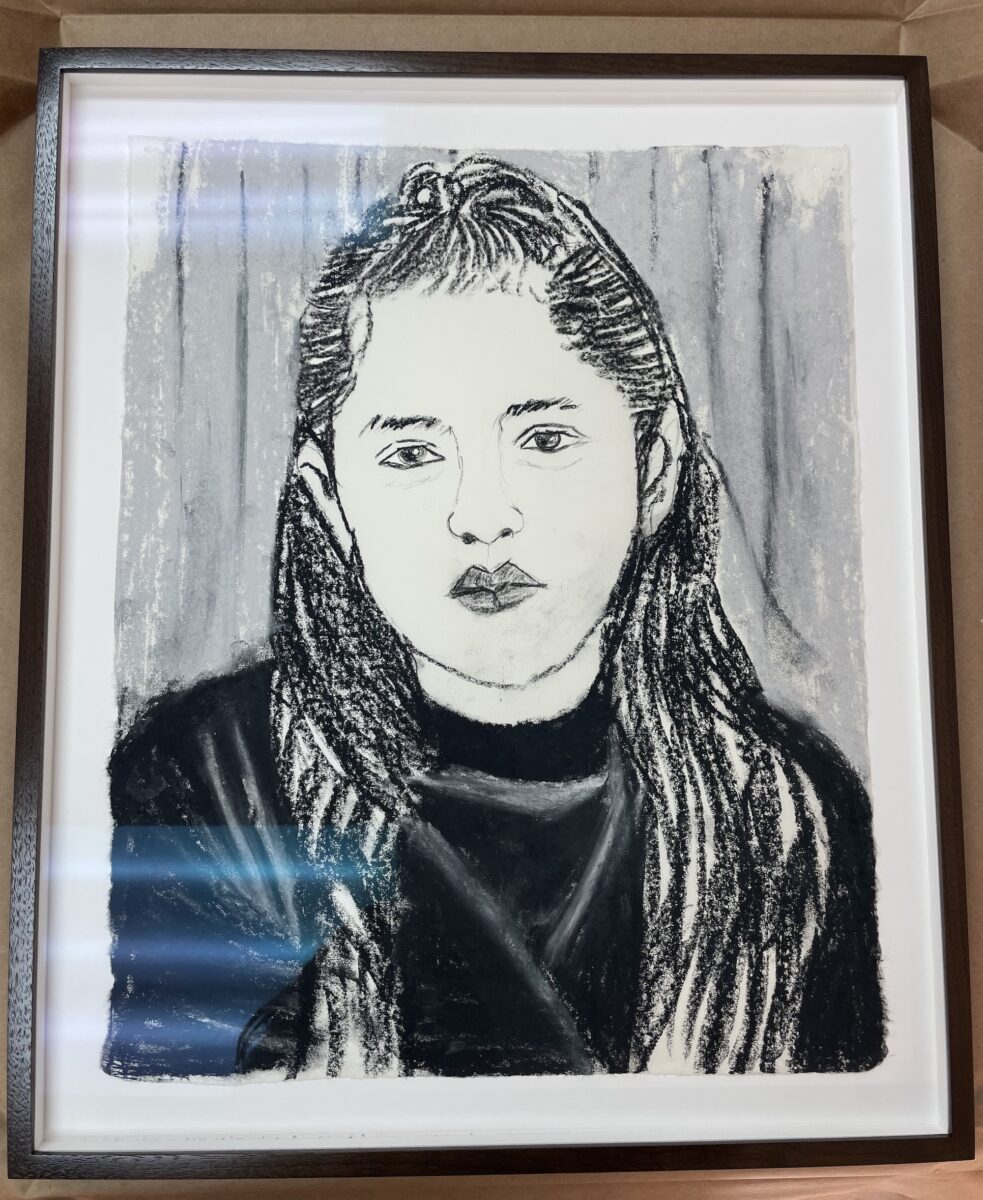
The connection to the community, and the fact we are exhibiting indigenous works alongside the work of the contemporary artists seemed to be something that many of them connected with. I think we are in a time where a lot of artists want to use their work to help the world in some way, but maybe don’t know how to do it, and I think Migrate Art is a platform that allows them to do that.
Can you talk us through some of the exhibition artwork highlights?
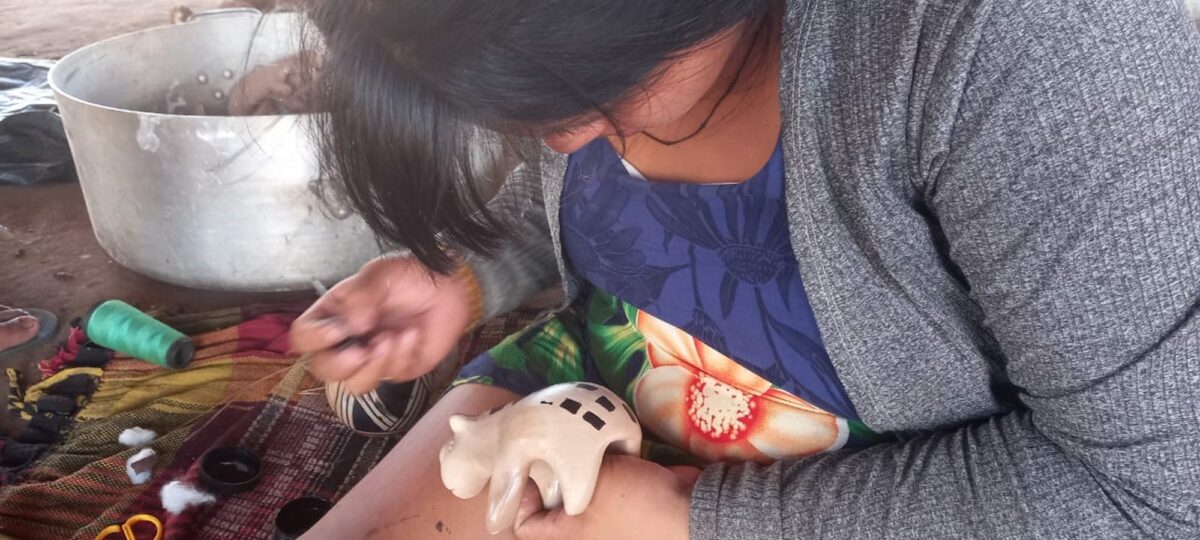
I think first and foremost, the ceramic and wood works from the Xingu community, and the paintings from Kamo Waura are some of the most unique and special aspects of the exhibition- the project took on a life of its own when this artistic exchange happened. Richard Long’s piece is spectacular, and he created it in our office at the end of 2023 which was a particularly special experience, it is also the first time he has created a signature hand print work in paint, as opposed to mud. There are several artists whose work I love such as Harminder Judge, Alfie Caine and Antonio Tarsis, and having got to know them through the project, my appreciation for their work has only deepened. Loie Hollowell has created her first ever black-and-white work, which feels like a small milestone in her career- she has been incredibly supportive of our work over the past few years, and I’m pleased to be able to work with her again.
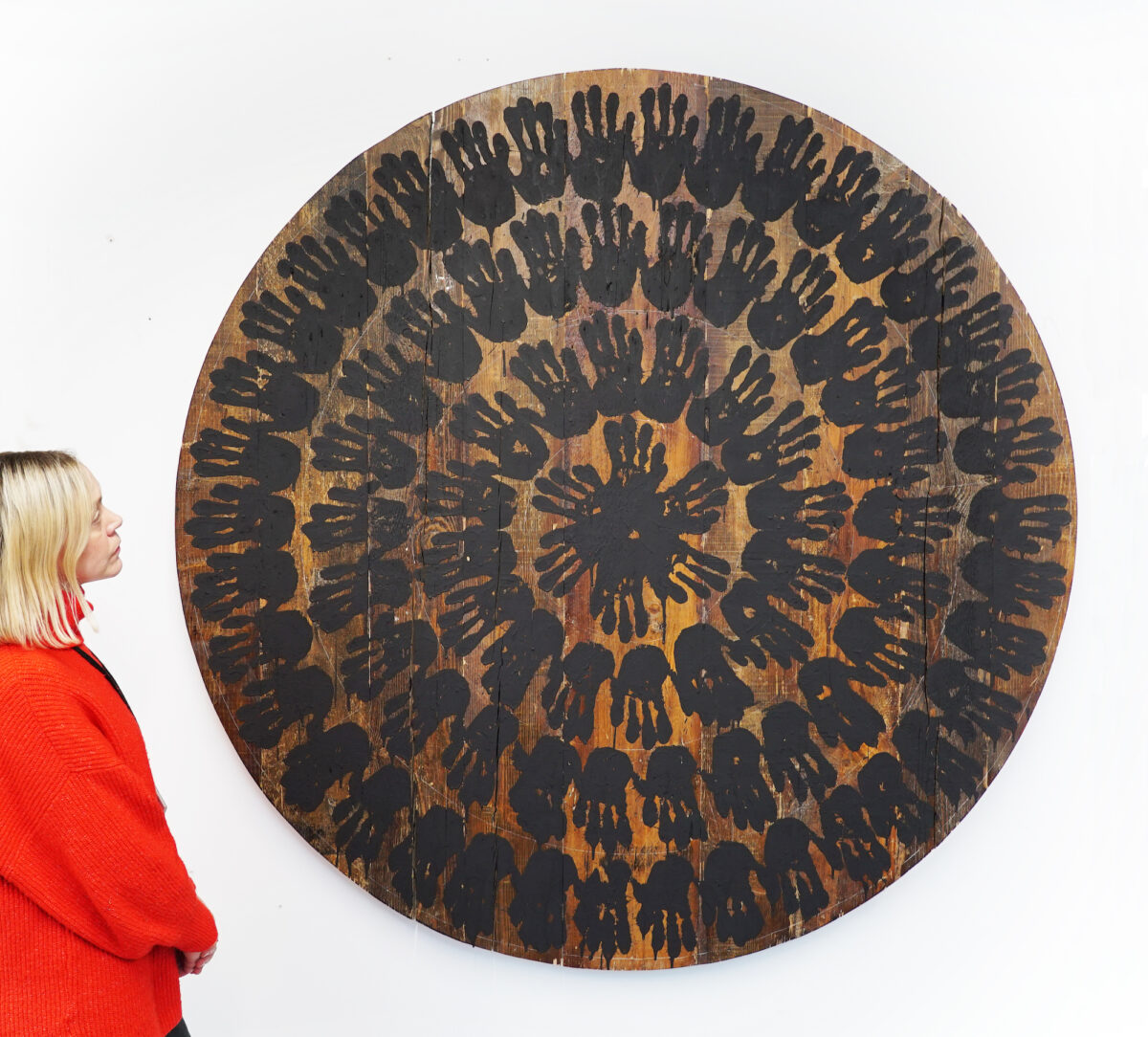
What is next for Migrate Art?
If all goes to plan, we will be heading back with People’s Palace Projects to stay with the Xingu in April this year, as Thiago and the team at People’s Palace Projects will be completing a large project with the community. They have created the first ever location in the villages for items from Xingu culture to be stored and protected, as there have been a few terrible cases in recent years of sacred sites and items being destroyed by the illegal loggers and miners. There was one specific example of a sacred cave which had centuries old stone carvings telling the story of the Xingu peoples history that was not included in the demarcated protected land by the government, and tragically it was demolished. People’s Palace Projects worked with another organisation called Factum to painstakingly re-create a facsimile of this cave, which will be taken to the community and housed in this new location. The community has kindly invited us to attend the opening of this, so we are just working out the logistics of this. I have also been talking to one of the major artists from the project about coming to the Amazon with us, as the community is keen to host artists for a sort-of residency programme. I won’t say which artist it is for now, in case it doesn’t come together, but the trip would align very well with their artistic practice.
From the Ashes exhibition: 11 Dray Walk, The Truman Brewery, migrateart.com/from-the-ashes 21st – 25th February 2024- Private View: 20th February 6-9pm
Auction: Christie’s Post War and Contemporary Day Sale, Saturday 9th March 2024 migrateart.com
